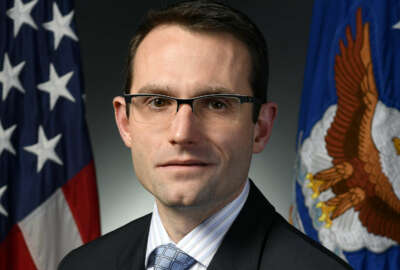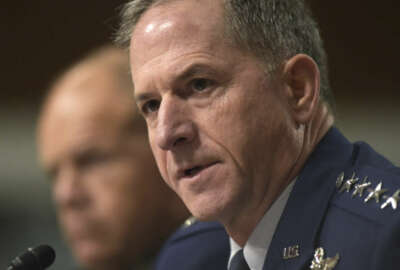
Air Force moves some basic training to Keesler in coronavirus response
The Air Force will send 60 recruits a week to Keesler to help the service meet end strength goals.
After initial tests, the Air Force is bifurcating its basic training by moving some recruits to Keesler Air Force Base to increase social distancing and prevent the spread of coronavirus.
Starting on June 2, Keesler Air Force Base in Biloxi, Mississippi, will take on 60 recruits a week until at least the last week of September. The training will reach full operational capacity once 360 trainees are in the pipeline for the truncated six-week course.
Recruits will ship directly to Keesler, graduate there and remain in the local area for technical training.
The Air Force traditionally sent recruits only to Joint Base San Antonio-Lackland in Texas for basic training. Lackland usually takes in between 650 and 800 recruits a week, but was forced to reduce that number to 460 in March. Lackland is now taking in about 640 a week.
“The Air Force has asked us to train up to 9,400 active duty between now and the end of the fiscal year and a total of 12,800 total force during that time,” Maj. Gen. Andrea Tullos, commander of the Second Air Force, told reporters by phone Tuesday. “That’s the rough order of magnitude. We’ll put out about 700 a week so if you do the math, minus the 60 at Keesler, the rest will be at Lackland.”
The Air Force is expected to come in slightly below, but still in the congressionally-authorized limits, of its 2020 end strength goal of 332,800 despite the setbacks, according to Air Force spokeswoman Capt. Carrie Volpe. Projections currently have the service finishing the year at about 330,000.
Tullos said it is possible the Air Force will open up more supplemental training areas as needed depending on how coronavirus progresses.
“I would not recommend that we do this on a permanent basis, and I would like to think we would not need to do this for an extended period of time under COVID conditions,” Tullos said. “We are doing it now both to relieve pressure off Lackland to allow them to maintain physical distancing and to respond if necessary if they do have an outbreak.”
Meanwhile, the Air Force is taking old infrastructure at Lackland that is not being used because of social distancing and repairing it for 2021.
“We think we are going to be under COVID conditions for perhaps as long as a year,” Tullos said. “We have to prepare for waves of this where we might be able to relax a little bit but then go back into a more restrictive lockdown.”
Keesler and Lackland are building in COVID-19 safety measures to its training. For example, recruits are quarantined for the first two weeks after arriving. Trainers moved some of the academic aspects of the course to the beginning of training so they could be finished in isolation. Airmen are social distancing and wearing masks as well.
Part of the reason the Air Force chose Keesler is there are many technical courses offered nearby, that way airmen will not have to travel after basic training to get job specific experience.
The Air Force started looking into Keesler as a supplemental training area in March. The service created a proof of concept training at Keesler and graduated a class of slightly less than 60 airmen on May 15, the first to do so outside of Lackland since 1968.
“We are deliberately developing options to disperse the delivery of basic training during contingencies to provide surge capacity and introduce agility into the training pipeline construct,” Tullos said. “This will also help provide relief to the military training instructor staff and ease the strain on our basic training infrastructure.”
Tullos said there were some bumps along the way.
“There are some things that the Lackland team does, which they’ve been doing for decades that they can probably do in their sleep, but are harder than you would think,” Tullos said.
One of those challenges were issuing uniforms and getting them tailored. Keesler had to do uniforms twice before they got them right.
Another factor was the barbershop. Tullos said barbers on Keesler were used to talking to airmen and hearing about their lives. That’s not the atmosphere basic training is trying to create, so the barbers had to learn to treat recruits differently.
Copyright © 2024 Federal News Network. All rights reserved. This website is not intended for users located within the European Economic Area.
Scott Maucione is a defense reporter for Federal News Network and reports on human capital, workforce and the Defense Department at-large.
Follow @smaucioneWFED





